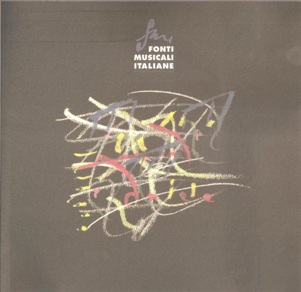Un manoscritto de «La serva padrona» di Giovanni Paisiello nell'archivio musicale dell'Abbazia di Montecassino
Abstract
Tra i numerosi testimoni manoscritti de La Serva padrona di Giovanni Paisiello, quello conservato presso l'Abbazia di Montecassino è stato finora ritenuto una copia. Si tratta in realtà di una fonte semiautografa, estremamente eterogenea e costituita da fascicoli originariamente autonomi, più tardi rilegati. Nella fonte sono presenti almeno sei mani. Quattro grafie sono certamente da attribuire a copisti, altre due al compositore, còlto in due diversi stadi creativi. Nel corso dello studio si sono volute distinguere fra loro le due grafie paisielliane per il solo fatto che una di esse abbozza le idee musicali frettolosamente, con vistose cancellature rimaste leggibili, mentre l'altra, pur mantenendo gli stessi tratti, scrive con più ordine, probabilmente copiando stesure provvisorie preesistenti. Complessivamente, alla mano autoriale sono da attribuire ben sette recitativi e cinque numeri chiusi. Quasi tutti i recitativi, ricchi di ripensamenti, sono totalmente differenti, tanto nella linea vocale quanto nella condotta armonica, dalla copia viennese degli intermezzi – considerata la versione definitiva della composizione per la firma appostavi da Paisiello in calce alla dedica all'imperatrice Caterina di Russia. I numeri chiusi del manoscritto cassinese, invece, coincidono pienamente con quelli finora conosciuti. In un passaggio all'interno di un recitativo steso da uno dei copisti, si è rivelato un rapporto di dipendenza dalla versione viennese – fatto questo, però, che ha valore solo per i brani copiati da questa mano. Il resto del manoscritto e il suo assemblaggio non hanno un rapporto diretto con la copia autorizzata da Paisiello, e non solo per via dell'evidente diversità dei recitativi: la successione dei numeri è talora erronea; l'aria Donne vaghe risulta assente; alcune indicazioni aggiunte per chiarire l'ordine dei brani mostrano un fraintendimento delle intenzioni paisielliane. La rilegatura dei fascicoli, avvenuta in un momento posteriore alla realizzazione della copia viennese, è il risultato di una volontà intervenuta per ricostituire l'unità di un'opera senza conoscerla pienamente. L'analisi dei recitativi autografi, destinati ad essere sostituiti, ha mostrato come Paisiello, in uno stadio creativo embrionale, tendesse a privilegiare la linea vocale rispetto al basso; quest'ultimo, spesso scritto in valori tenuti per numerose battute, si rivela a tratti armonicamente incompatibile con essa.
******A manuscript of Giovanni Paisiello's La serva padrona in the music archives of Montecassino Abbey
Among the numerous manuscripts of Giovanni Paisiello's La Serva padrona, the ms preserved at the Abbey of Montecassino has up to now been considered a copy. In actual fact it is a semi-autographical source, extremely heterogeneous and consisting of originally autonomous files bound together at a later date. At least six hands can be recognized in the source: four handwritings can without doubt be attributed to copyists, another two to the composer himself, at two different stages of creation. In the course of the present study, the two autographs of Paisiello have been differentiated merely because one of them hurriedly outlines the musical ideas, with substantial cancellations still readable, while the other, although in the same handwriting, is written in a more orderly manner, probably copying pre-existing provisional drafts. Altogether, at least seven recitatives and five closed numbers can be attributed to the composer's hand. Almost all the recitatives – full of afterthoughts – are totally different both in the vocal line and in the harmonic pattern from the Viennese copy of the intermezzi, which is considered the definitive version of the composition given the signature of Paisiello at the foot of the dedication to the Empress Catherine of Russia. The closed numbers of the Cassino manuscript, instead, coincide in full with those known to date. In a passage of a recitative written by one of the copyists a sort of dependence can be detected on the Viennese version – a fact, however, that is only important for the passages copied by this hand. The rest of the manuscript and its assembly does not have any direct connection with the copy authorized by Paisiello, not only because of the evident diversity of the recitatives: the series of closed numbers is at times incorrect; the aria Donne vaghe is missing; some indications added to illuminate the order of the passages demonstrate a misunderstanding of Paisiello's intentions. The rebinding of the files, carried out after the realization of the Viennese copy, is the result of a decision taken in order to re-establish the unity of an opera without full knowledge of it. Analysis of the autograph recitatives, destined to be substituted, has shown how Paisiello, in a creatively embryonic stage, tended to favour the vocal line rather than the basso continuo; the latter, frequently written in values held for several bars, is shown to be at times harmonically incompatible with the former.
##submission.downloads##
Pubblicato
Fascicolo
Sezione
Licenza
© CIDIM
Tutti i diritti riservati


